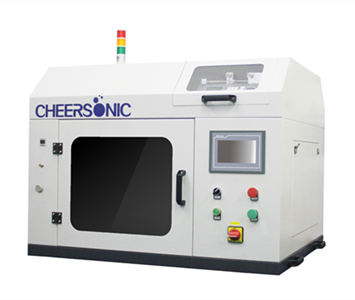Ultrasonic Fuel Cell Coating Video
Current status of fuel cells
In my country’s central and eastern coastal areas, such as the Pearl River Delta, the Yangtze River Delta, and Beijing, where the economy and technology are strong, major companies in the development of fuel cells in my country have gathered. Moreover, in the past two years, the investment in fuel cells has heated up, from a few years ago to nearly a thousand fuel cell companies now. Different from the development path of foreign fuel cell manufacturers such as Toyota and Hyundai, Chinese hydrogen fuel cell vehicle companies are mainly distributed in the commercial vehicle field-hydrogen fuel cell commercial vehicles have achieved mass production.
Hydrogen fuel cell passenger vehicles are still in the stage of demonstration operation. Among them, SAIC has invested the most in fuel cell passenger vehicles. In 2017, it released the first commercial fuel cell light bus in China, the Chase V80. Regarding fuel cell forklifts, my country has already deployed companies such as Dongguan Hydrogen. As the hydrogen energy market continues to mature, my country’s forklift market will be another huge application scenario for fuel cells.
Regarding hydrogen refueling stations, my country has formed a group of enterprises from design to operation of hydrogen refueling stations. These enterprises are mainly concentrated in the Beijing, Shanghai, and Guangzhou areas. At present, my country’s key core equipment for hydrogen production, hydrogen storage, and hydrogenation cannot all be “domesticated”, and the cost is difficult to reduce. my country has built 12 operational hydrogen refueling stations and 19 are under construction. Typical representatives of Beijing Yongfeng hydrogen refueling station and Shanghai Anting hydrogen refueling station have introduced core equipment and technical consulting services from abroad. my country’s demonstration hydrogen refueling station and the on-board hydrogen supply system of fuel cell buses are still at the 35 MPa pressure technology level. In order to support passenger cars, the existing hydrogen refueling stations use 45 MPa diaphragm compressors, 45 MPa hydrogen storage tanks and 35 MPa hydrogen filling machines. The increase in pressure standards has yet to be popularized by 70 MPa fuel cell vehicles in the future.
In terms of systems, domestic fuel cell development is mainly based on proton exchange membrane fuel cells for vehicles, which already have independent system development capabilities and strong production capabilities. Companies represented by Xinyuan Power, Yihuatong, Fulsai, Reshaping Technology and Guohong Reshaping have the mass production capacity of 10,000 fuel cell systems per year. However, in terms of key components of fuel cell systems, there is a large gap between China and the international advanced level, and there are basically no mature products.
In terms of stacks, domestic fuel cell stacks are gradually taking off. The number of stacks and industry chain companies has gradually increased, and the production capacity has increased. By 2018, the domestic stack production capacity will exceed 400,000 kilowatts. At present, there are two main types of domestic reactor manufacturers: independent research and development, represented by Xinyuan Power, Shenli Technology and Tomorrow’s Hydrogen Energy; the introduction of mature foreign reactor technology, represented by Guangdong Guohong, and the remaining companies include Shandong Weichai Power, Nantong Baiying et al. In terms of bipolar plates, due to the high cost of machining graphite plates, composite bipolar plates have begun to be applied in recent years, such as graphite/resin composites, expanded graphite/resin composites, stainless steel/graphite composites, etc. The stainless steel/graphite composite bipolar plate stack developed by Xinyuan Power in China has been applied to SAIC MAXUS V80 light passenger cars. Guangdong Guohong introduced the expanded graphite/resin composite bipolar plate production technology of Canada’s Ballard Company, and it has been equipped with hundreds of fuel cell vehicles to produce stacks. Passenger car fuel batteries have high energy density requirements, and metal bipolar plates have obvious advantages over graphite and composite bipolar plates.
Recommended Machine
UAL100 ultrasonic dispersion liquid supply system
UAM3000 Ultrasonic Bracket Spraying Machine
UAM4000 small desktop ultrasonic spraying machine
UAM4000L Ultrasonic Precision Spraying Machine
UAM6000 Ultrasonic Large Spraying Machine
UAM7000 Ultrasonic Balloon Guide Wire Spraying Machine
UAM8000 ultrasonic assembly line spraying machine

